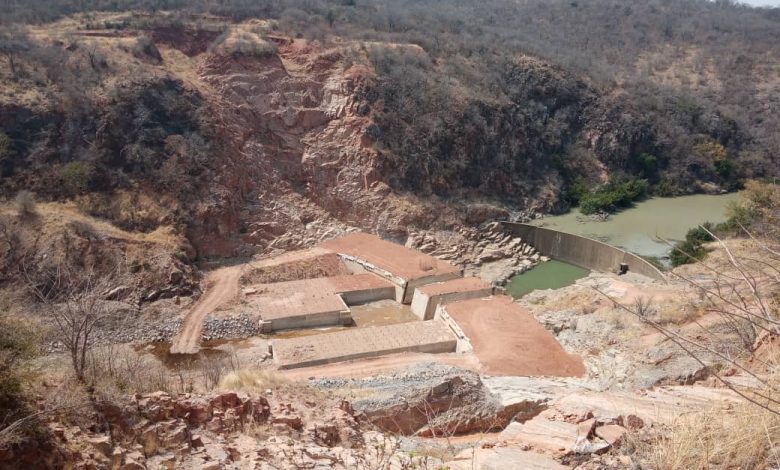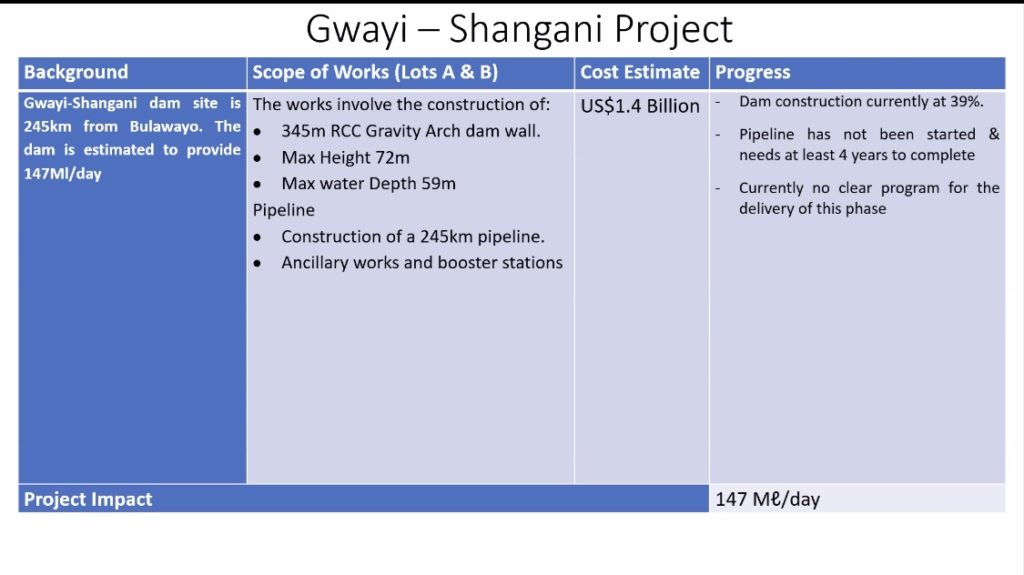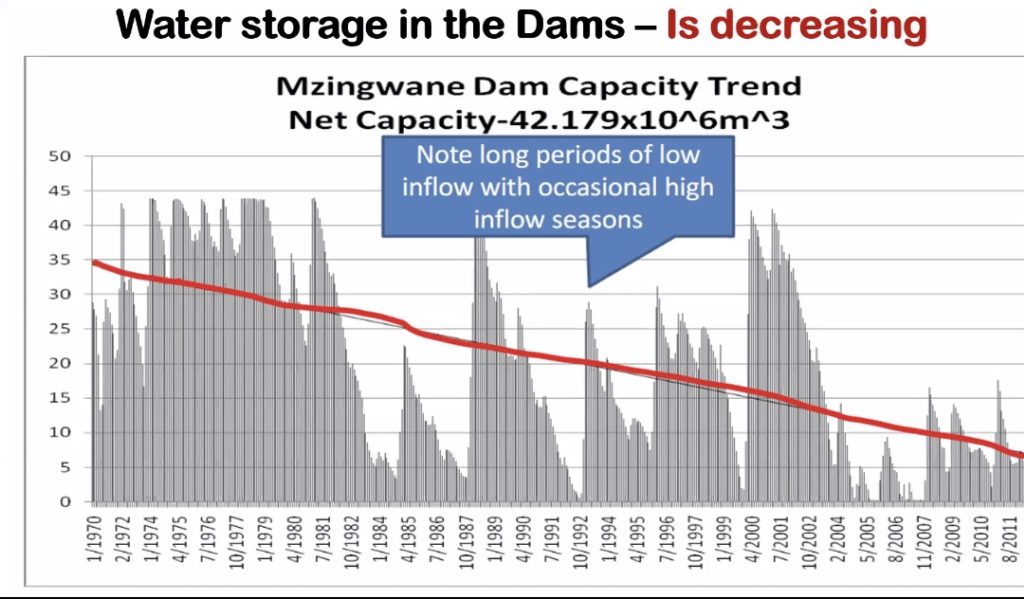Thirsty Bulawayo pins hopes on Gwayi-Shangani dam

Council officials in Bulawayo have said there are no clear timelines on the completion of the Gwayi-Shangani dam project, which is touted as the long term solution to the water challenges affecting Bulawayo and the Matabeleland region.
Located 245 km from Bulawayo, the Gwayi-Shangani Dam is expected to provide 147 megalitres per day.
Speaking on the Bulawayo’s water crisis at a meeting held virtually, Wednesday, BCC director of engineering services Engineer Simela Dube said funding constraints had slowed down the project.
“So far funding worth US$200 million was raised but to complete the project that will cost around US$1 billion. We have taken 15 years to have that dam constructed and it currently stands at 39 percent complete,” he said.

The city engineer said at the last briefing with contractors (China International Water and Electric Corporation), the project was to be completed by December 2021 resources permitting.
“The pipeline has not been started and needs at least four years to complete, again with resources permitting. The work can be done and if we can raise US$1 billion dedicated to the pipeline,” Dube said.
State media reported that the project was now expected to be completed in December 2022 after it was stalled by the global outbreak of Covid-19.
Eng Dube also highlighted that the city needed practical options to alleviate water shortages as water levels in the city’s supply dams were declining.

The Gwayi-Shangani Dam is one of the strategic development projects under the water and sanitation cluster and in the 2020 National Budget was allocated ZWL$400 million.
Upon completion, it will be the third-largest inland dam in the country after Tugwi -Mukosi and Lake Mutirikwi in Masvingo.
In previous reports, a Zimbabwe National Water Authority (ZINWA) resident engineer, Hassan Tobve said feasibility studies indicated that once complete, the Gwayi-Shangani Dam had a net holding capacity of 634 million cubic metres, which is 1,8 times bigger than the capacity of the city’s six supply dams located in Matabeleland South.






